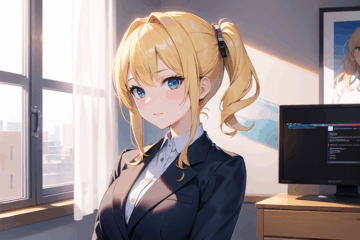宮内庁公式HP 今月中めどに約16年ぶりにリニューアルへ トップページ整理し写真を多く配置するなど閲覧者に見やすく
宮内庁が皇室の活動を伝える公式ホームページについて、今月中をめどに16年ぶりのリニューアルを行うことが分かりました。
16年とは言わないまでも5年以上経つWebサイトは相当古いと感じます。サイトレイアウトの進化は、時代ごとにユーザー体験やデザイン技術の変化に対応し、段階的に発展してきました。
初期のインターネットが普及した1990年代後半から2000年代初頭にかけて、Webサイトのレイアウトは非常にシンプルで、テキストベースの構成が一般的でした。基本的にHTMLといった初期のマークアップ言語によって組まれ、背景が白地でリンクが青色、視覚的な要素が限られていたのが特徴です。
2000年代に入ると、CSSの登場によって、レイアウトの自由度が高まりました。この時期から固定レイアウトが主流となり、ナビゲーションバーを持つデザインが普及。企業サイトではトップにロゴ、左側にメニュー、中央にコンテンツという配置が一般的でした。
その後、視覚的に洗練されたデザインが求められるようになり、画像やアイコン、装飾が増加し、ページ内の情報量も飛躍的に増えました。この頃には、グリッドベースのデザインや3カラム構成が多くのサイトで採用されました。また、インタラクティブな要素やユーザー参加型のコンテンツも増え、Webデザインはより動的なものへと変化します。
2010年代に入ると、スマートフォンの普及に伴い、レスポンシブデザインが急速に広まりました。画面サイズに応じてレイアウトを柔軟に変化させる技術が一般化し、モバイルファーストの考え方が重要視されるようになります。この時期には、シンプルで直感的な操作性を重視し、余白を活かしたミニマルなデザインも多く見られました。
近年では、モーションデザインやマイクロインタラクションを活用することで、より動きやすいダイナミックなユーザー体験が生まれています。全体として、視覚的な洗練だけでなく、情報構造の整理とアクセスのしやすさが、現代のWebデザインにおける重要なテーマとなっていますが、多くのサイトのレイアウトは同じ形態が取られ、逸脱すると使いにくいと感じられてしまいます。
Webサイトのデザインはさることながら、そこにコンテンツの充実も必要です。スカスカのサイトをいくらデザインできらびやかにしようとしても無意味。両軸で考えることがWebサイトを活かすことにつながります。
The Imperial Household Agency’s official website, which shares information about the activities of the Imperial Family, is set to undergo a renewal by the end of this month, marking its first major update in 16 years.
A website that hasn’t been updated in over five years, let alone 16, tends to feel quite outdated. The evolution of website layouts has progressed gradually, adapting to changes in user experience and design technologies over time.
In the late 1990s to early 2000s, when the internet was beginning to gain widespread use, website layouts were very simple and primarily text-based. Built mainly with early markup languages like HTML, these sites often had plain white backgrounds, blue links, and minimal visual elements.
By the 2000s, the introduction of CSS allowed for greater layout flexibility. During this period, fixed layouts became mainstream, and designs with navigation bars gained popularity. Corporate websites typically featured a logo at the top, a menu on the left, and content in the center.
As time went on, there was an increasing demand for visually polished designs. The use of images, icons, and decorative elements grew, along with a significant increase in the volume of on-page information. Grid-based designs and three-column layouts were widely adopted. Interactive features and user-generated content also began to emerge, leading to more dynamic website designs.
The 2010s saw the rapid rise of responsive design, driven by the proliferation of smartphones. Techniques for adapting layouts to various screen sizes became standard, and the mobile-first approach gained importance. During this period, simplicity and intuitive navigation were emphasized, with many websites favoring minimal designs that made effective use of white space.
In recent years, motion design and micro-interactions have enabled more dynamic and engaging user experiences. Modern web design now focuses on both visual sophistication and well-structured information, prioritizing accessibility and ease of navigation. However, many websites follow similar layout conventions, as deviations from these norms can make a site feel unintuitive.
While web design is undoubtedly important, the content itself is equally critical. A visually stunning website with sparse content holds little value. A successful website requires a balanced approach, where both design and content work together effectively to create meaningful user experiences.
株式会社ASAP
及川知也


